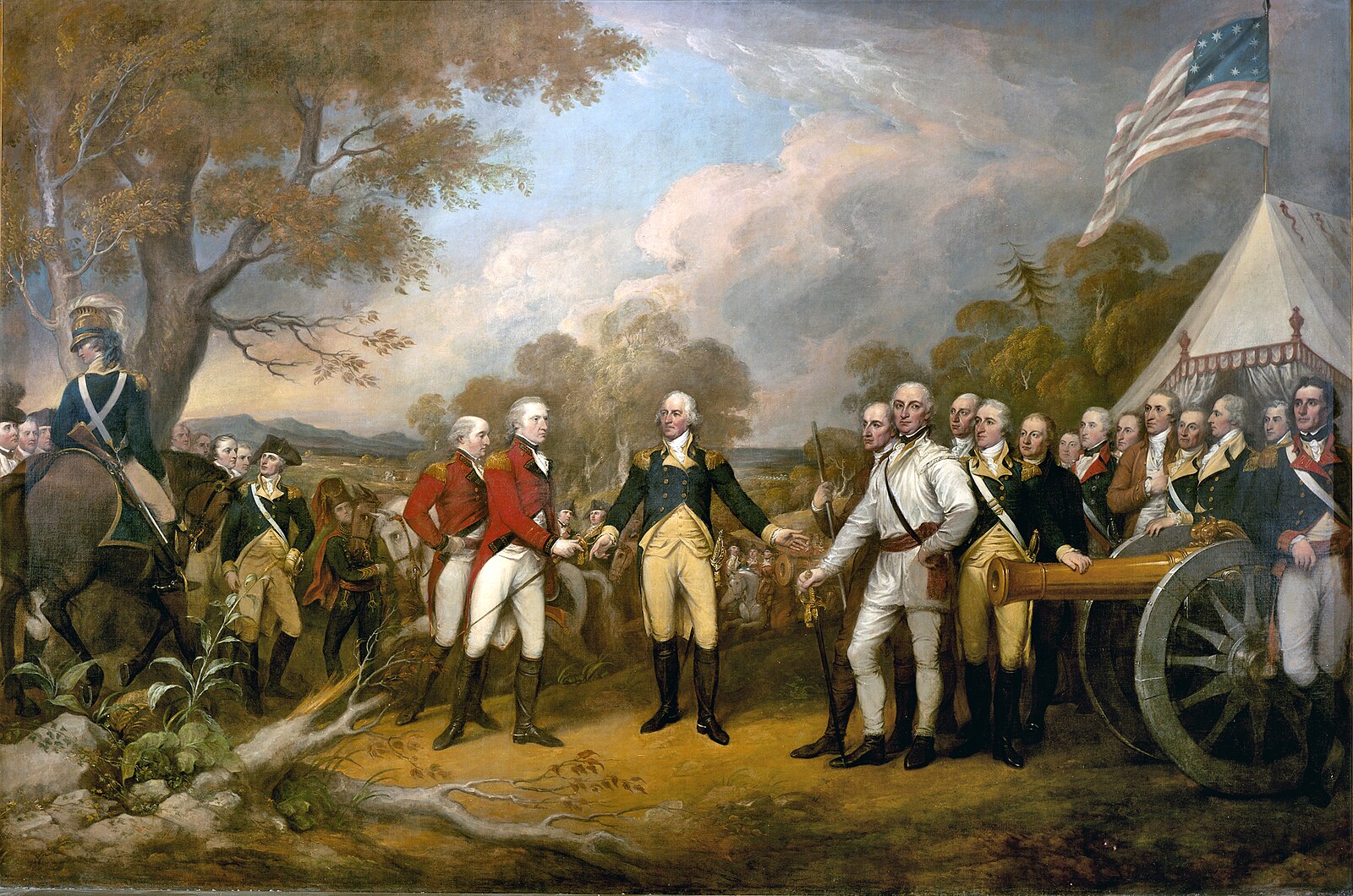How the British ‘Southern Strategy’ ultimately cost them the Revolutionary War

Surrender of General Burgoyne, an 1822 portrait by John Trumbull depicting John Burgoyne, a British Army general, surrendering to General Horatio Gates, who refused to take his sword. The painting presently hangs in the United States Capitol Rotunda.
SUMMARY
On Oct. 19. 1781, the Continental Army finally scored the decisive victory over the British Army it needed to secure independence. The Battle of Yorktown saw Lt. Gen. Charles Cornwallis surrender to George Washington and forced the British to negotiate a final peace. But the seeds of that victory were planted long before the combined French and American forces laid siege to the city.
Victory at Yorktown required not just a large land force but also for the French Fleet to wrest control of the seas in the vicinity from the Royal Navy, no small task. But even though they were outnumbered, British regulars were a vaunted fighting force. Some medical researchers believe it was the geography of the Americas combined with the British strategy of invading the southern colonies that ultimately led to its defeat at Yorktown.
In the first stages of the American Revolution, fighting was mainly focused on the largest, populated and urban areas of New England and the middle colonies. Focusing on large cities offered the opportunity for quantifiable strategic gains and to keep patriot fervor from most of the population. After the 1777 Battle of Saratoga in New York, that all changed.
The British Army invaded the southern colonies in 1778, beginning with Georgia and moving into South Carolina. Around the same time, France and Spain entered the war on the colonial side. Despite this intervention, British victories remained steady in the south. For the next three years, the patriot armies would have trouble finding a real victory... until they laid siege to Yorktown. What was crippling the British was the same thing that has crippled armies for centuries.
Though victorious on the battlefield, the British armies were suffering in the American South, which was then the unhealthiest area of North America. Disease has long been the scourge of military forces in the field and even back then more casualties came from diseases than from enemy weapons. This was particularly true in the area the British were trying to control.
Until 1951, malaria was a huge problem for most of the southern U.S. It was eliminated from the United States after a focused government effort. During the Revolution, fighting in warmer months was still a huge issue, especially in the hot summers. Among the commanders, it was known as “the Sickly Season.”
The overall commander of British forces in North America was acutely aware of it. After capturing Charleston, South Carolina, Clinton was anxious to get his troops back north before the season began killing them. The Continentals knew it and hoped the mosquitoes would kill so many British troops they could be considered an ally. But the fevers killed their share of patriots too.
But the British didn’t totally withdraw northward after taking Charleston in 1780. In fact, both sides had suspended operations during the summer of 1779. Occupation forces in Georgia were being wracked with illness. There were only eight months of the year where troops could be effective and if the British could capitalize on that in the south, they could win. In taking Charleston, they won before the summer months and took just a third of the Army back to New York. The rest were left with Cornwallis in command.
When those months came, the British in Charleston and Savannah were plagued with typhus, typhoid, yellow fever, and malaria. British doctors were too ill to go on treating the men. When the British met Horatio Gates’ Continentals at the Battle of Camden, the entire British Army was sick and Gates’ force was at half-strength due to illness.
After Camden, Cornwallis, with the bulk of his men and officers suffering from various fevers caused by mosquitoes in the region, decided to move his forces north after 1780. He chose to march to Yorktown. The British marched north through North Carolina that fall, but the army’s movements were still hampered by disease. Even Cornwallis came down with an illness. Clinton said he would consider returning to the south, as long as they could finish fighting by June. He never made it.
Winter of 1781 saw Cornwallis' army recover, but he continued moving to Virginia because the illnesses of the south had nearly destroyed his entire force. On April 25, 1781, he finally led his army to Yorktown, hoping it would recover from their illnesses and be in fighting shape to move south during the winter and rejoin the fight. Had they not been so sick, they might have remained in the South, continued their victories against the rebel armies and retained their American colonies.
SHARE
